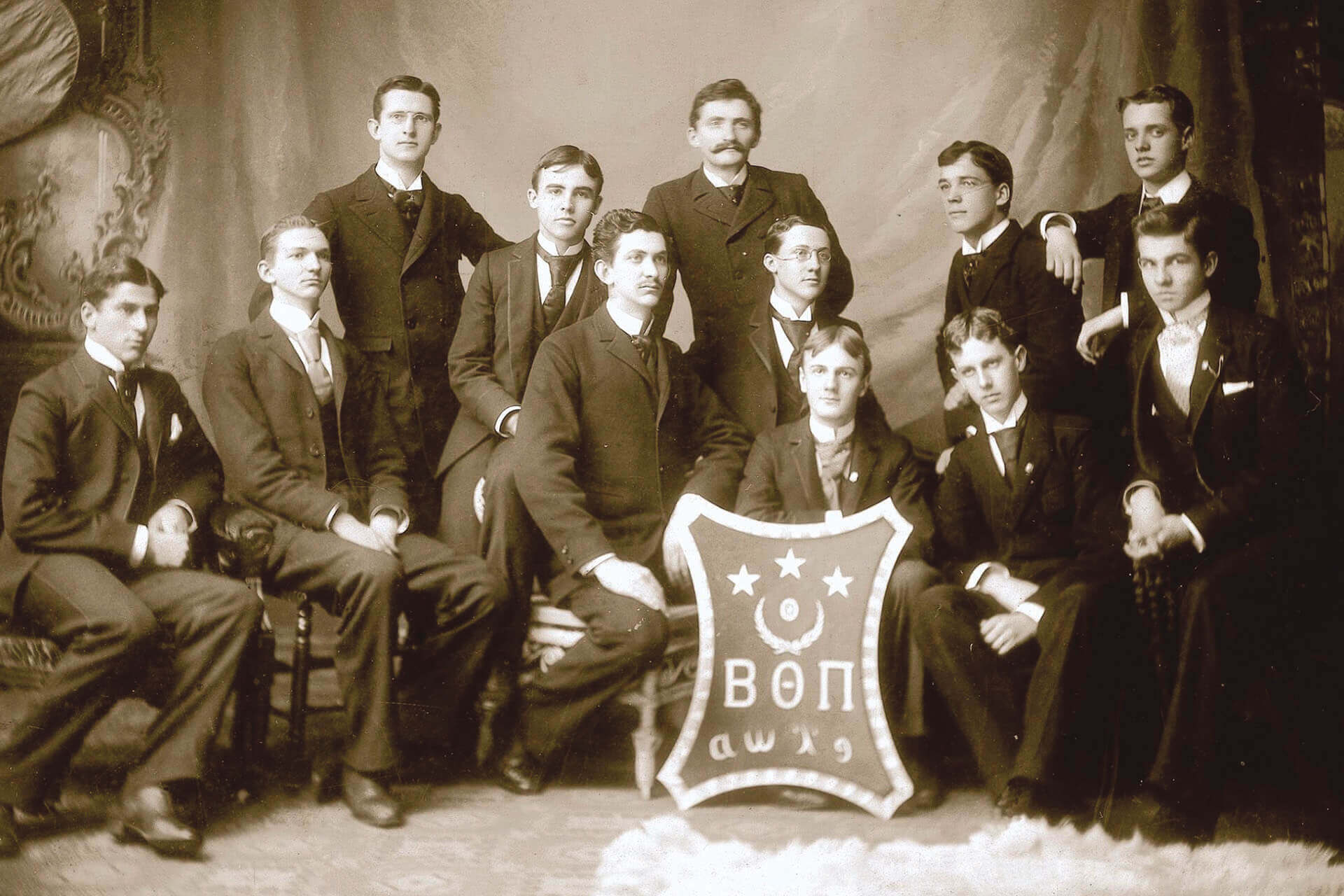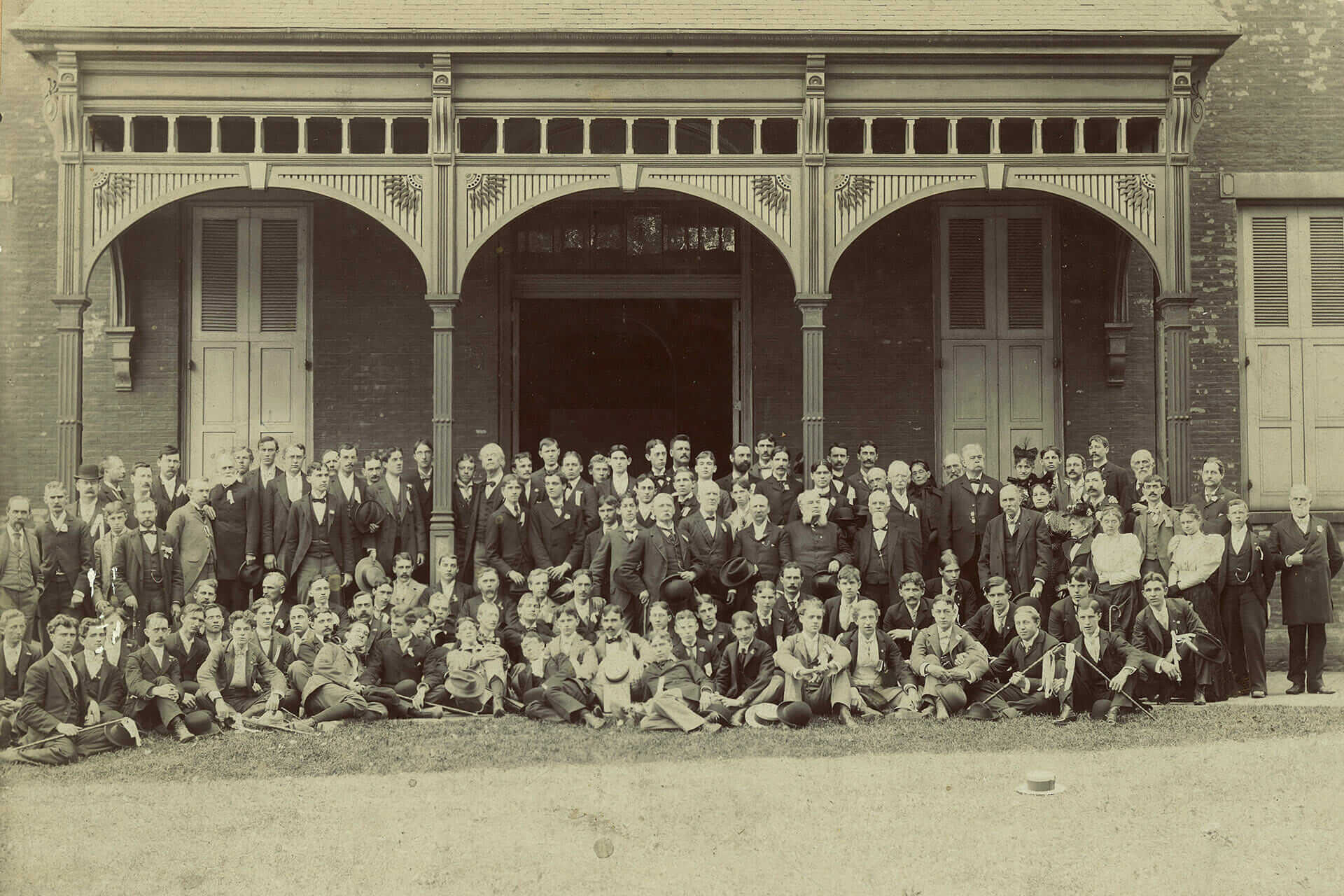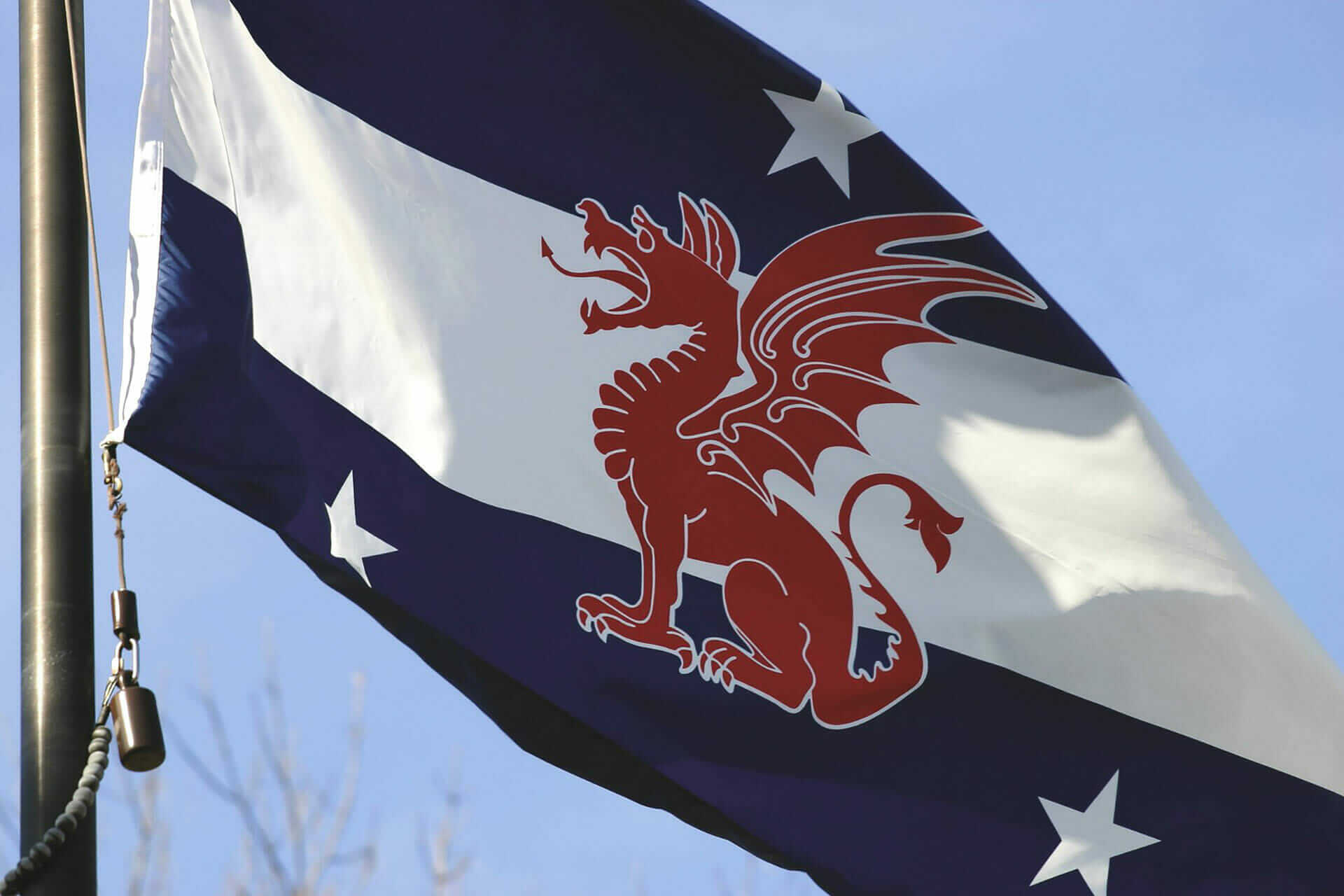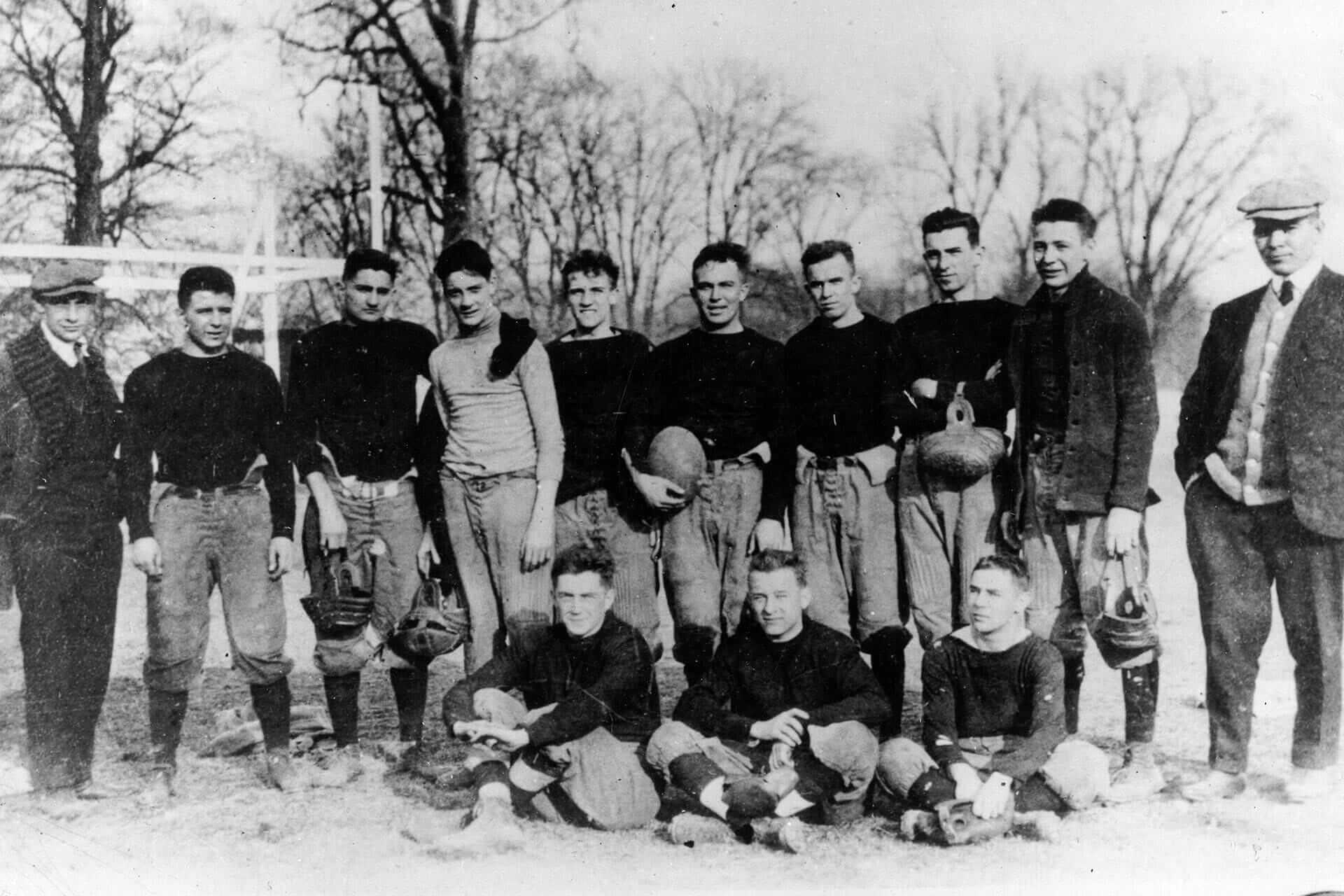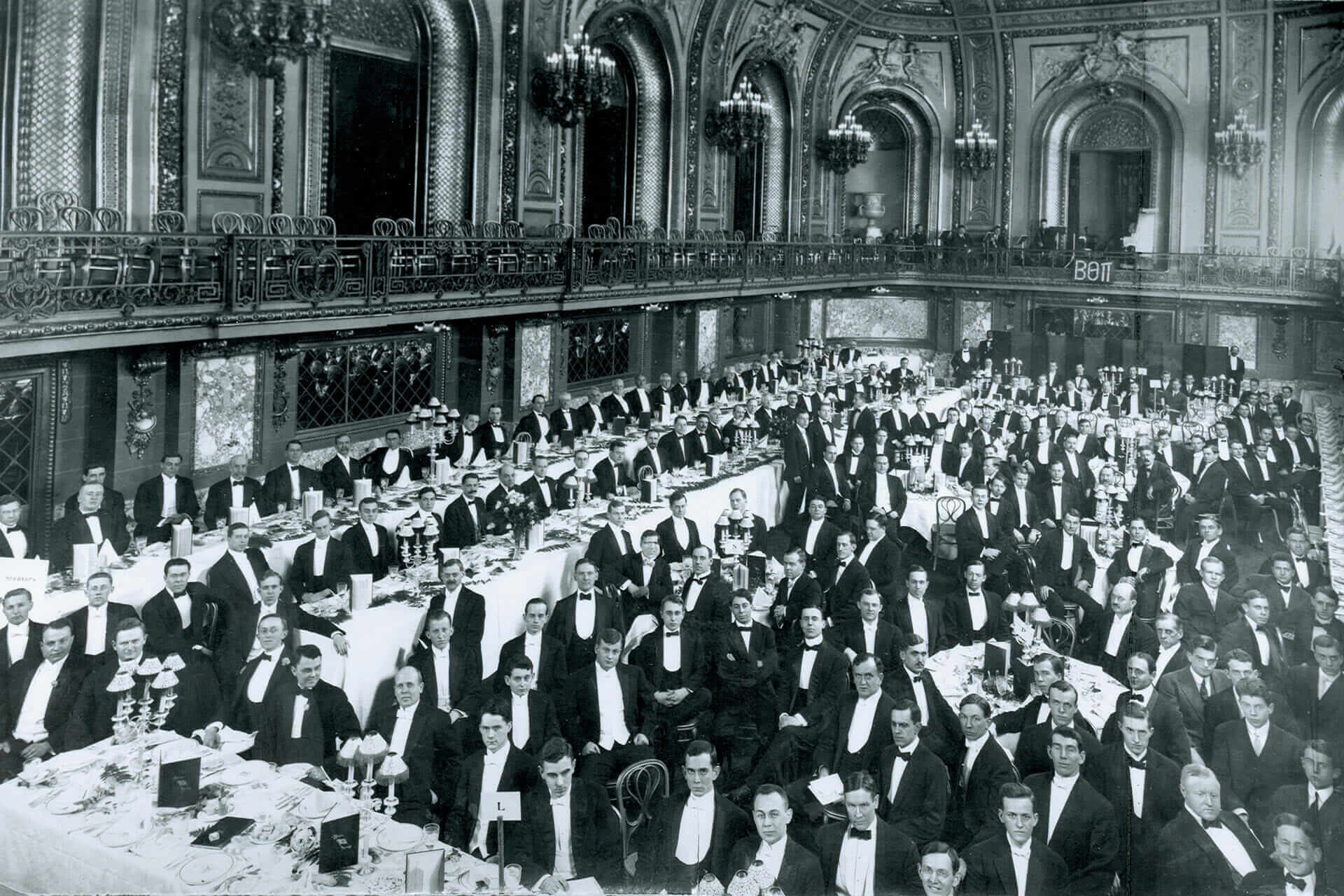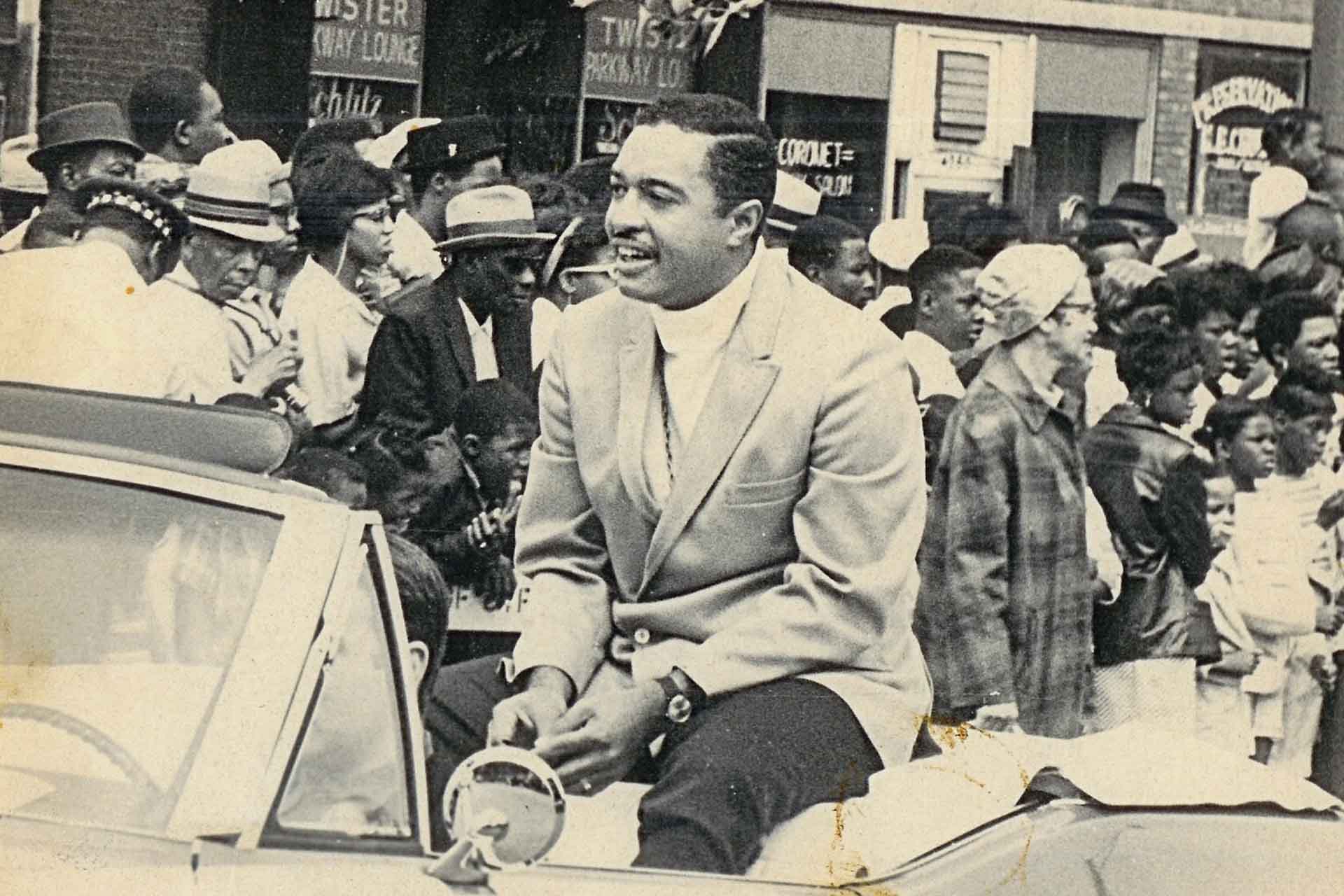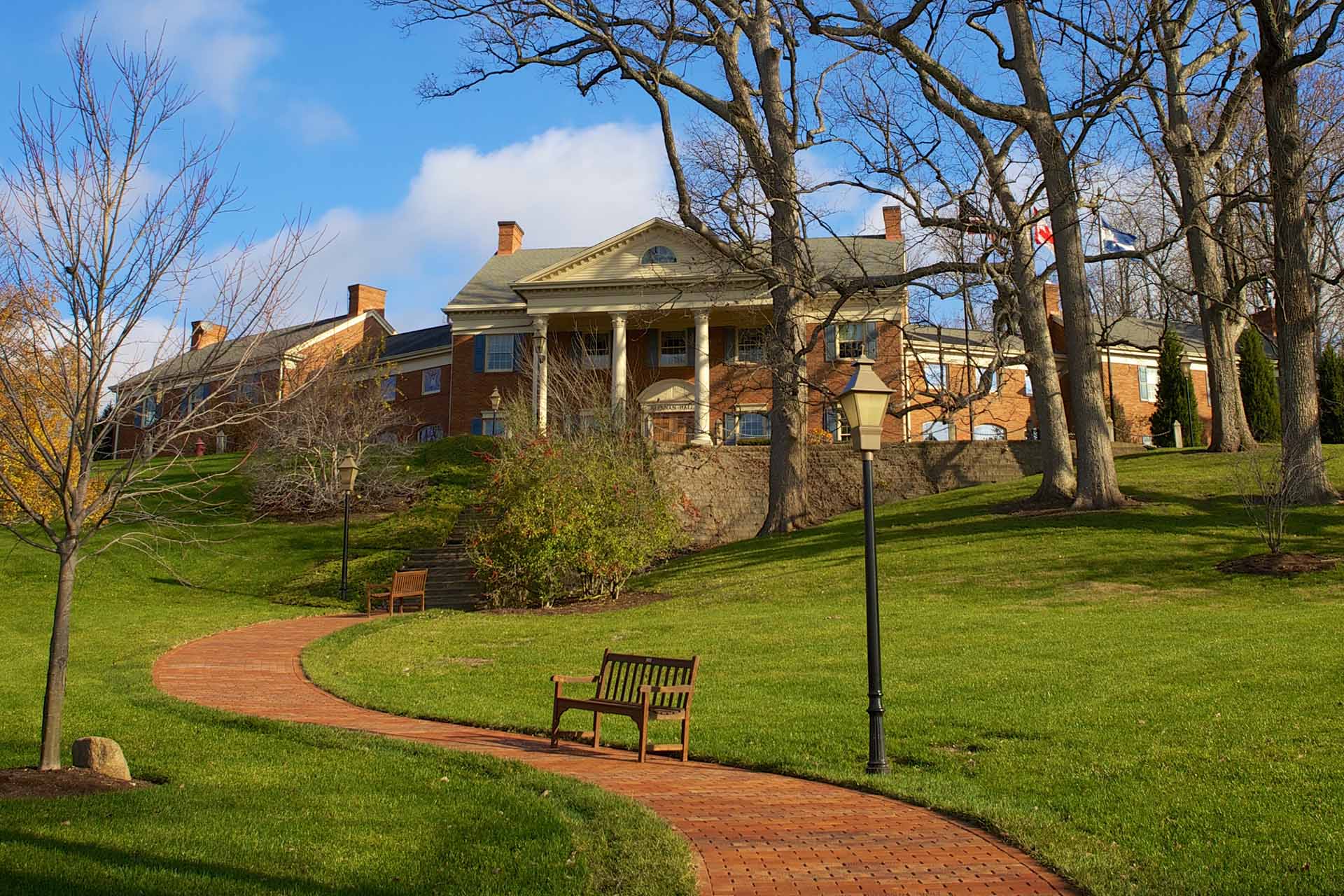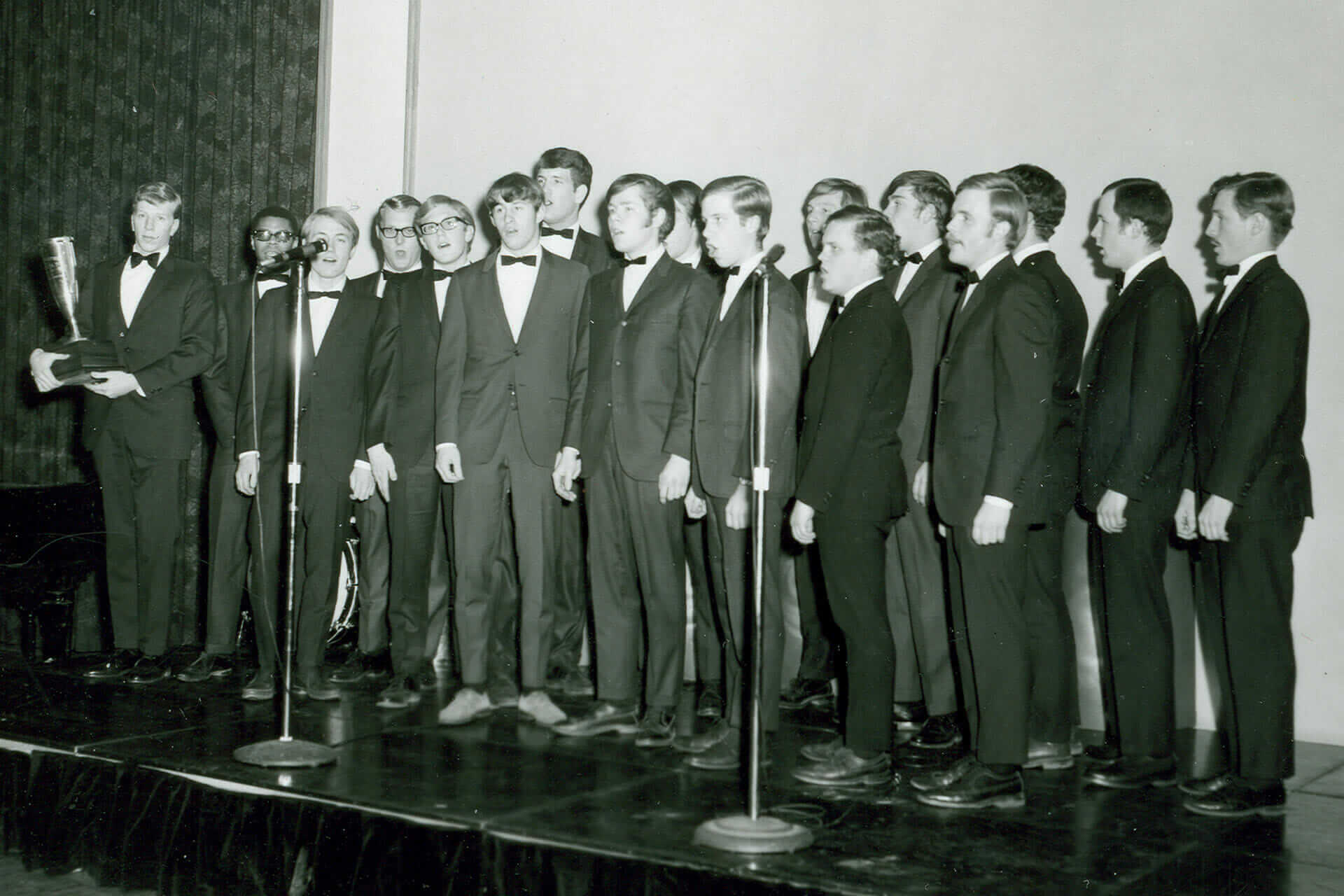Beta History
Beta Theta Pi has found a home on campuses across the United States and Canada since 1839. Among the oldest of all college fraternities, today Beta’s lifetime membership exceeds 215,000 men of principle. For generations, these brothers have made the Fraternity a leader in promoting brotherhood, personal growth and a sense of home for college-aged men.
The Founding
Beta Theta Pi, commonly known on campuses across North America simply as Beta, was founded on August 8, 1839, at Miami University in Oxford, Ohio. One of the oldest fraternities in existence, it was founded by students who had previously been members of the Erodelphian and Union Literary Societies but had greater aspirations for their own organization. Founder John Reily Knox, Miami 1839, noted at the time:
“There was an interest about the actions of men who bound themselves together by vows which were never broken and who pursued the great objects of their association with an energy that never tired, with a zeal which knew not-self, and with a devotedness that never counted gold.”
When Beta Theta Pi held its first meeting in the old college building known as “Old Main” (today’s Harrison Hall), eight founders were present to establish an order they believed would embrace the good of their fraternal peers without any of their objectionable features:
John Reily Knox, 1839
Samuel Taylor Marshall, 1840
David Linton, 1839
James George Smith, 1840
Charles Henry Hardin, 1841
John Holt Duncan, 1840
Michael Clarkson Ryan, 1839
Thomas Boston Gordon, 1840
“of ever honored memory“
That night, Beta Theta Pi – the oldest of the three fraternities forming the Miami Triad, along with Phi Delta Theta and Sigma Chi – was born.
In its nearly 185-year history, the many generations of men who have joined the Beta band have ascribed to the words of Founder Knox:
“What a few men united in object and effort will to do can be done; and more than that, such associations teach us in their records how far human friendships can carry us from the shrine of idol self.”
“Remember ‘tis virtue and wisdom that gave vitality to friendship”
1850 to 1900
Over the years, Beta Theta Pi became known for its entrepreneurial spirit, adopting the “Pioneering Fraternity” and “Leadership Fraternity” monikers.
Indeed, by 1850 Beta had already racked up several fraternal firsts, including being the first college fraternity founded west of the Allegheny Mountains (1839) and the first to host a General Convention (1848).
During these formative years, many of Beta Theta Pi’s signs, symbols, and traditions begin to take shape, including the creation of the Fraternity’s first badge and coat of arms and the adoption of “delicate shades of pink blue” as its colors.
Most notable during these years, however, is that fraternities (Beta included) frequently faced hostility from college and university authorities and were required to operate sub rosa. This hostility was perceived to be caused by the mistaken belief that college secret societies were formed to interfere with discipline and rules.
In order to instill confidence in its campus partners of the organization’s noble ambitions, in 1879, Beta became the first Fraternity to publish an open constitution for public distribution. Therein, Beta Theta Pi proclaimed its objects, which have held true in the year since:
“It shall be constituted as hereinafter provided and shall have for its objects the promotion of the moral and social culture of its members, the establishment of confidence and friendly relations among the universities and colleges of the United States and Canada, in securing unity of action and sympathy in matters of common interest among them, and the building up of a fraternity that recognizes mutual assistance in the honorable labors and aspirations of life, devotion to the cultivation of the intellect, unsullied friendship and unfaltering fidelity, as objects worthy of the highest aim and purpose of associated effort.”
Heraldry & Archives
A more complete list of Beta’s signs and symbols can be found on the Heraldry and Archives page, including information on The Great Seal, Beta flag, Loving Cup and the “delicate shades” of pink and blue.
For an even deeper dive into the Fraternity’s past, search through more than 45,000 photos hand-scanned and organized by chapter in the Beta Archive. The gallery contains thousand of never-before-seen treasures, and will continue to advance in functionality over time.
1900 to 1950
This half-century in the Fraternity’s history is best defined as the period of great “Beta Spirit,” which was best described in 1905 by Brother Willis O. Robb, Ohio Wesleyan 1879:
“The Beta is distinguishable and distinguished from all other kinds of fraternity men whatsoever, by just a little warmer and stronger, just a little tenderer and more enduring fraternity feeling than any of them can attain to … The first mark of a Beta will be his Beta spirit.”
There was a great reason to celebrate during this time, from having Betas occupy four out of the nine seats on the United States Supreme Court, to the wonderful centennial celebration and the establishment of the Founders Fund, which has evolved over time into the Beta Theta Pi Foundation and provided hundreds of millions of dollars in scholarships and leadership programming to members.
Of course, two World Wars also made these years tumultuous and often left the future of Beta on many campuses in jeopardy. Such was the case for Theta Zeta Chapter at Toronto, which saw nearly all of its members in battle or preparing to enlist and at risk of losing their chapter house without an influx of $2,500 – the equivalent of $55,000 today – in cash to cover expenses.
After the crisis was announced in a January 1916 edition of The Beta Theta Pi magazine, the Toronto Chapter Fund was established. Less than a year later, more than $3,000 had been collected and the Toronto chapter was saved. The Beta Spirit won out, as it so often does.
“Thus honor shall come to the badge that we wear and every Beta that honor shall share.”
1950 to 2000
The Beta tradition continued to grow and expand during this time, with notable events ranging from the initiation of Beta’s first Black member, Bill Lowry, Kenyon ’56, to the construction of the Fraternity’s current Administrative Office in Oxford, Ohio.
This period saw the establishment of a 2.5 minimum chapter and individual GPA – a standard Beta Theta Pi has continued to raise over the years – and the Beta Leadership Fund, which began what is now a more than 50-year tradition of funding leadership programming for collegiates and volunteers.
Though individual members during this time no doubt enjoyed the friendship and camaraderie afforded them by a fraternity experience, Beta and its interfraternal peers also largely fell victim to an “Animal House” mentality. For the first time, the longevity of our historic association was in doubt.
By the end of the 20th century, however, the stage was set for a renewed commitment to the Beta principles that was born of necessity and nurtured by yet another evolution of young men who yearned for excellence and thrived on brotherhood.
2000 to Present
Realizing a recommitment to Beta Theta Pi’s founding values was necessary, the award-winning Men of Principle Initiative was established. In the years since, the Fraternity has seen significant improvements in the areas of academics, recruitment, risk management and leadership development.
Before Men of Principle, the Fraternity’s average chapter GPA was just above 2.8. Today the Fraternity’s GPA has risen to 3.251, the highest of all fraternities. The average chapter size is 68 men, compared to 48.9 in 1997. In 1998 there was an average of 1.95 volunteer advisors per chapter. Today, an average of eight advisors work with each chapter.
With the Men of Principle initiative, Beta gave a new voice to the enduring values of the Fraternity. The Initiative was more than a program; it was a deep inner philosophy that demanded integrity from every chapter and all members of the Fraternity. Today, as it was back in 1839, Beta Theta Pi is a shining example across North America for all that is good and true when men come together in a brotherhood of purpose, friendship and fidelity.
“There’s a scene where brothers greet, where true kindred hearts do meet…”
The Singing Fraternity
Even before the first decade of the Fraternity’s history ended, Betas raised their voices in a collection of songs. These were printed on a card and included opening and closing odes, a benediction, an initiation song, and a greeting of new members.
So essential was singing in the Fraternity’s founding and growth during the 19th century that many songs and poems emerged from that era, many of them still popular.
Collections of Beta songs appeared periodically until 1902 when the publication became a red hard-cover book with gold leaf imprinted cover — a format that was followed for the next 90 years.
The Fraternity’s song collection has grown to be quite extensive over the years, containing songs written to long-familiar music and a number also set to original tunes. Additions are made from year to year, each new edition of the songbook containing new melodies.
Heritage Tour
Oxford has so much to offer when it comes to fraternity history, let alone Beta Theta Pi’s. Home of the Miami Triad — Beta Theta Pi, Phi Delta Theta and Sigma Chi — and the Alpha chapters of the Delta Zeta and Phi Kappa Tau, Miami is affectionately known as the Mother of Fraternities. Take a stroll through time and explore the many heritage sites Oxford has to offer.
From the Beta Campanile to the Alpha Chapter house, this exclusive audio tour will be your guide every step of the way as you reminisce every moment that shaped the Great and Good Fraternity. Or, explore Oxford’s heritage sites virtually. The tour is designed to begin at any of Beta’s heritage sites in and around Oxford. Use the map to guide you to the next stop of your tour.
Alpha Chapter House
The Alpha Chapter House
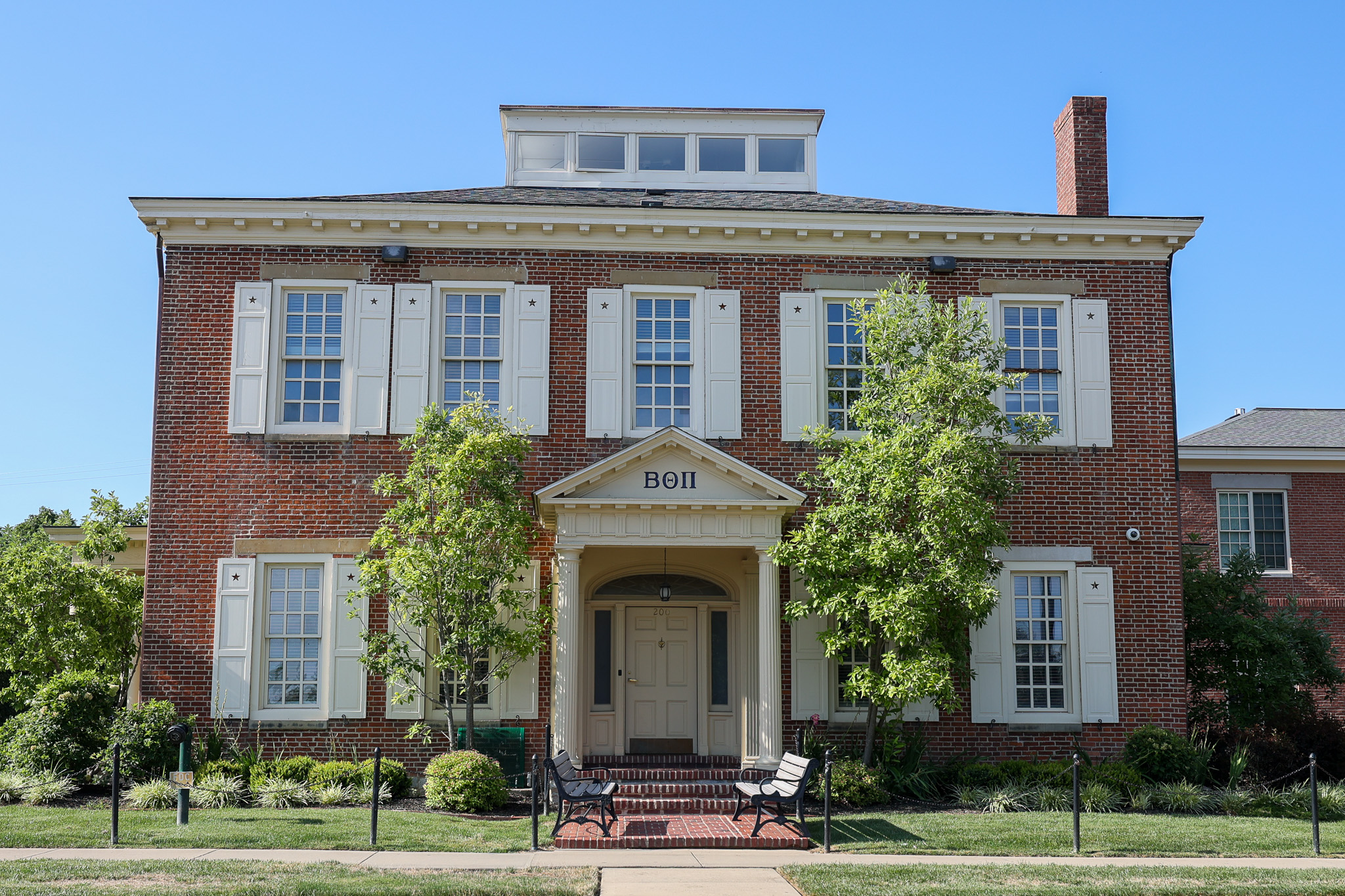
Many renovations have happened through the years and countless notable Miami men have walked through the front door. Start at the front of the house and join General Fraternity Historian and Archivist Zac Haines, Miami ’05, for a brief history on how the Alpha Chapter found their home at 200 East High Street in Oxford.
Inside the Chapter Home
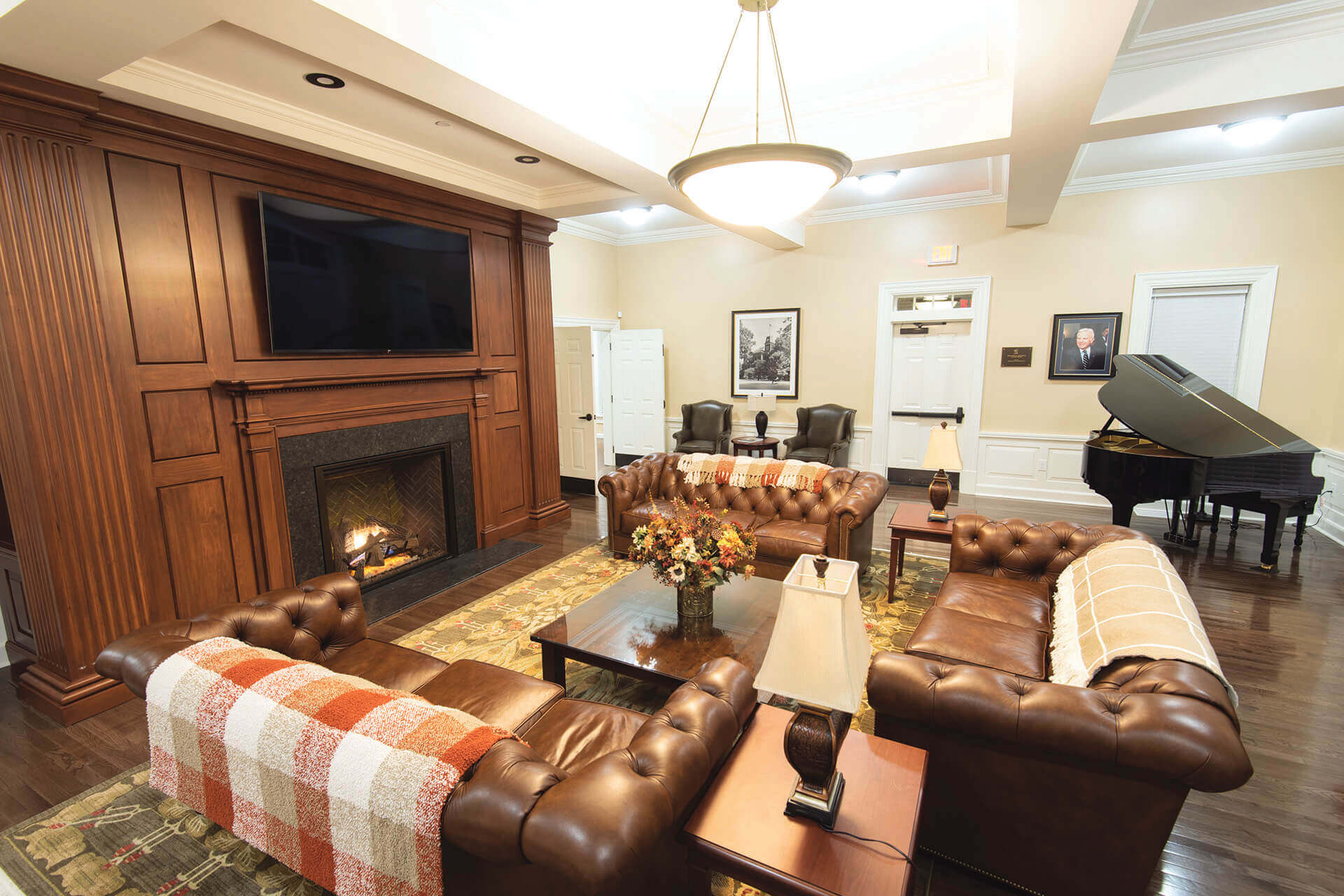
If you are able to enter the chapter house, explore the balance of modern and traditional amenities. See how each renovation worked toward making it a unified chapter home.
Alpha Chapter Museum
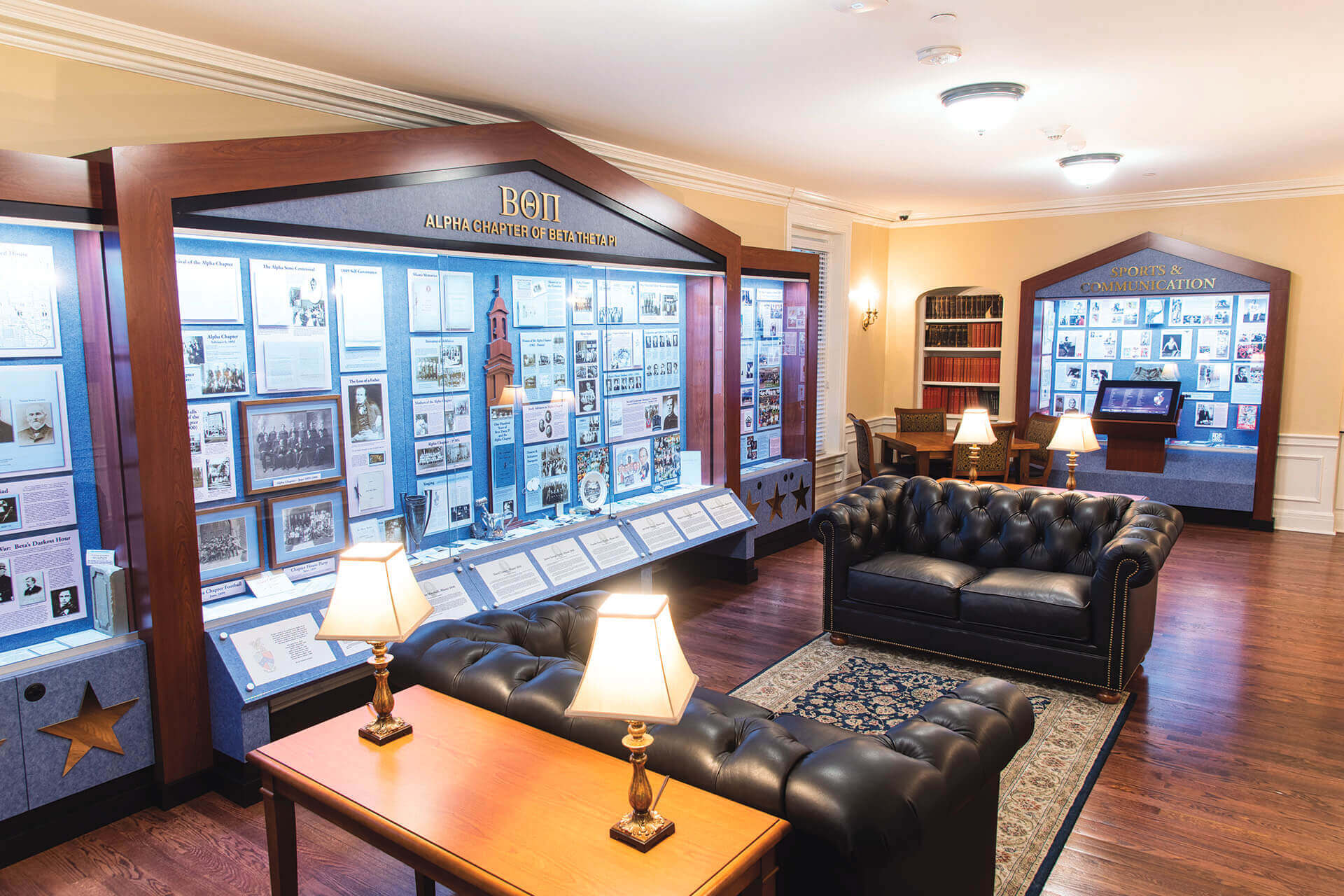
Tour guide and General Fraternity Historian and Archivist Zac Haines, Miami ’05, completed countless hours of research to provide for the Alpha Chapter Museum on the first floor of the house as a gift to the chapter in 2007. Notable exhibits include a scan of the original constitution and a time capsule recovered during the 2018 renovation, in addition to exploring themes through the chapter’s storied history.
The Beta Quadrangle
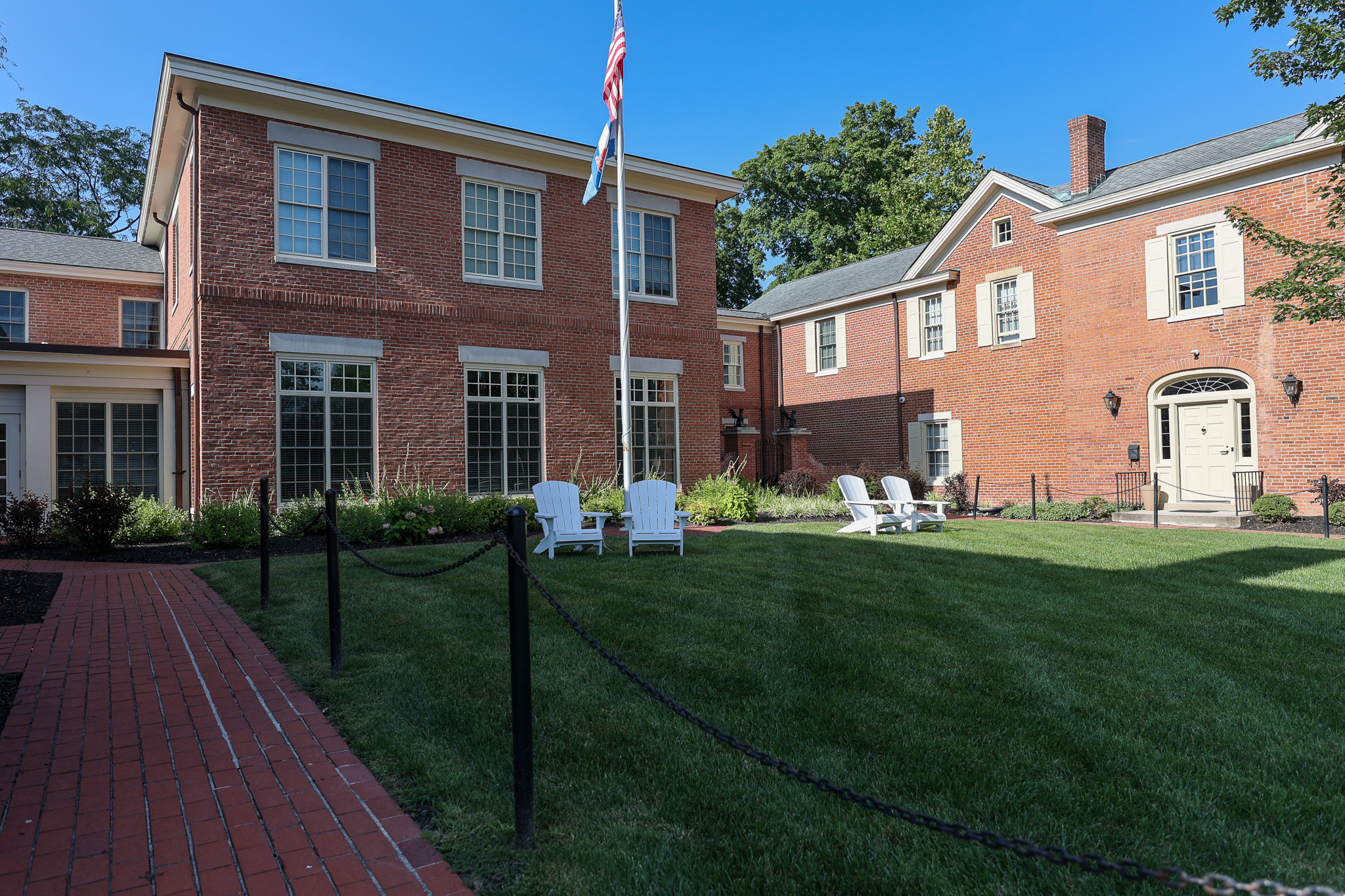
Outside, green space like this is not common at many chapter houses, and it almost wasn’t meant to be. The Beta Quadrangle offers a perfect spot for Miami men to relax between their studies.
Beta's First Administrative Office
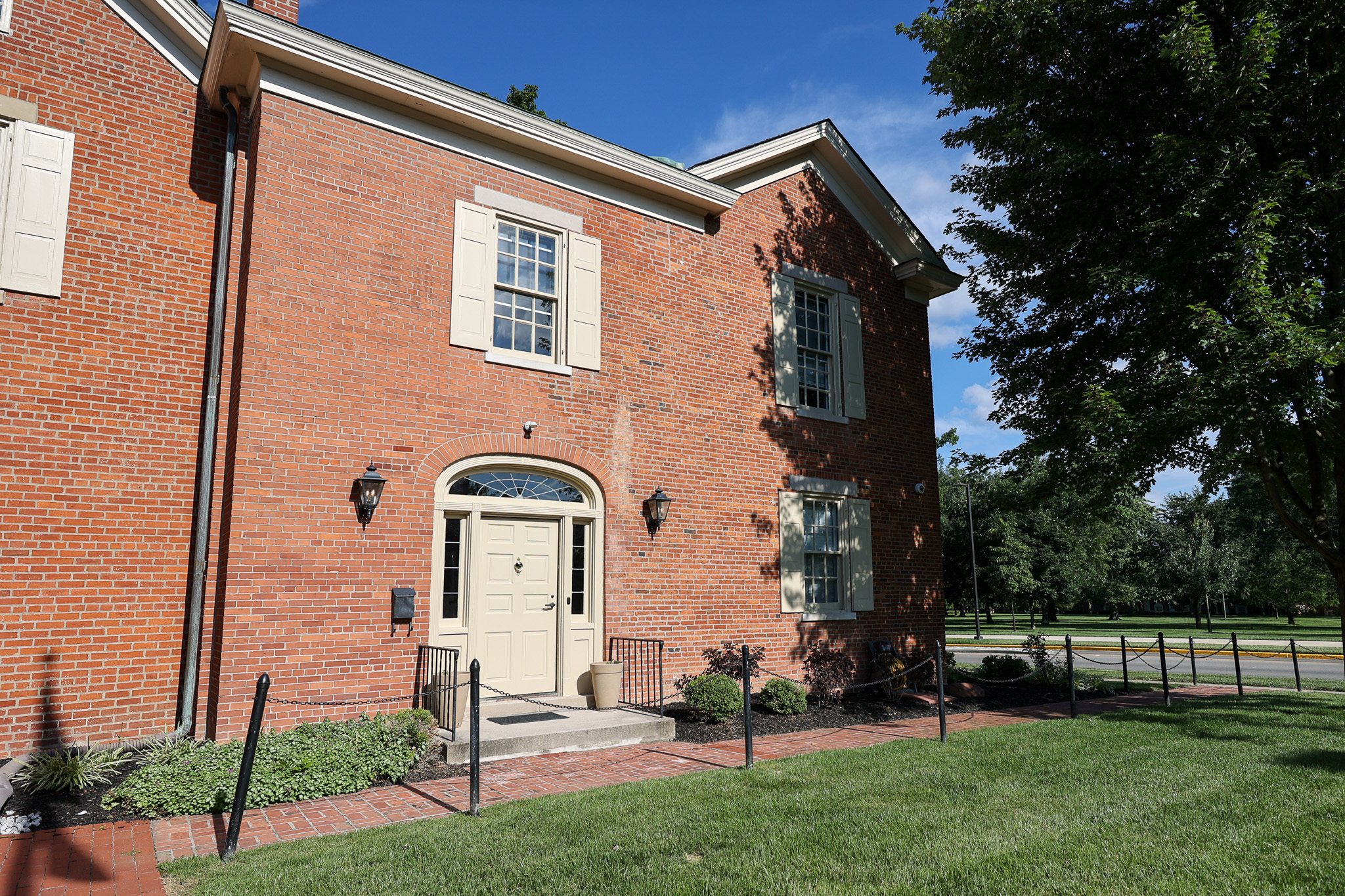
In addition to the lot next door being Alpha Chapter’s first house, the right-side building was the Fraternity’s first Administrative Office. After the office moved about a half-mile north of town, the chapter merged the two buildings together to expand their home.
Harrison Hall
Old Main
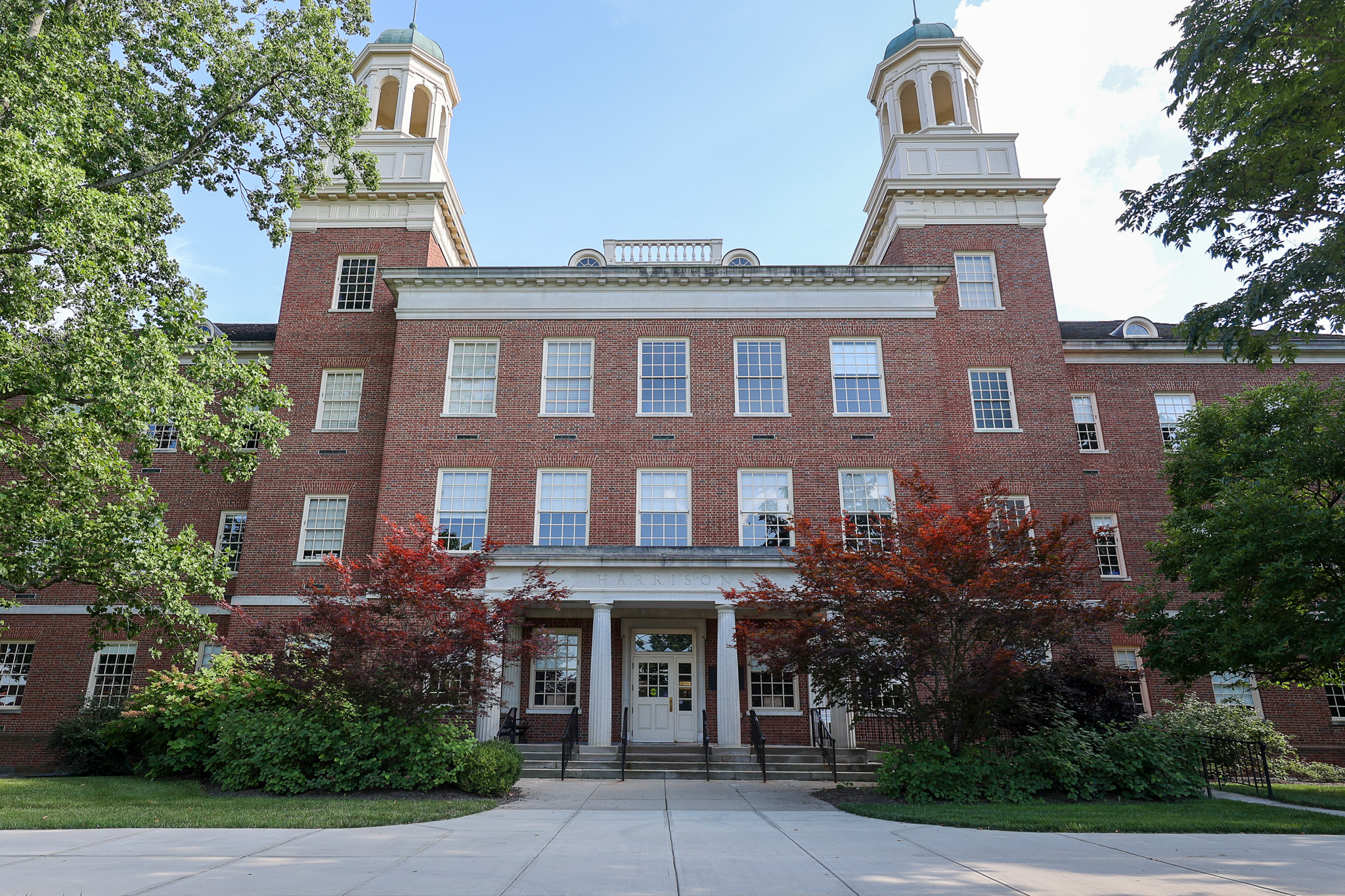
Go back in time with Chief Operating Officer John Reineke, Central Michigan ’09, to the earliest days of Miami University and imagine the lone classroom building on campus, the birthplace of Beta Theta Pi.
The Founding
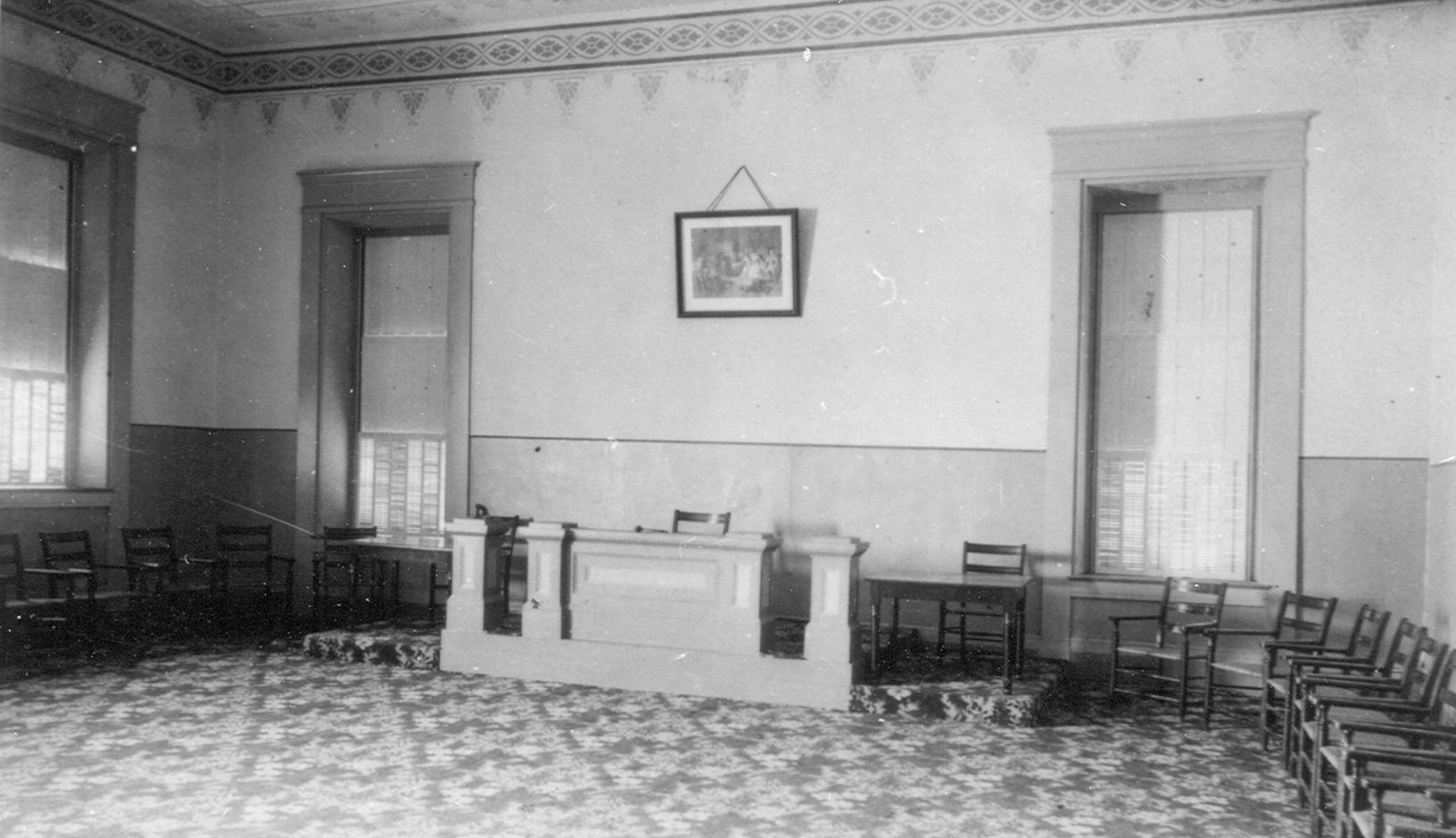
If you are able to, head inside Harrison Hall and up to the third floor – room 304 to be exact. Here, on August 8, 1839, Beta Theta Pi was founded.
The Halls of the Literary Societies
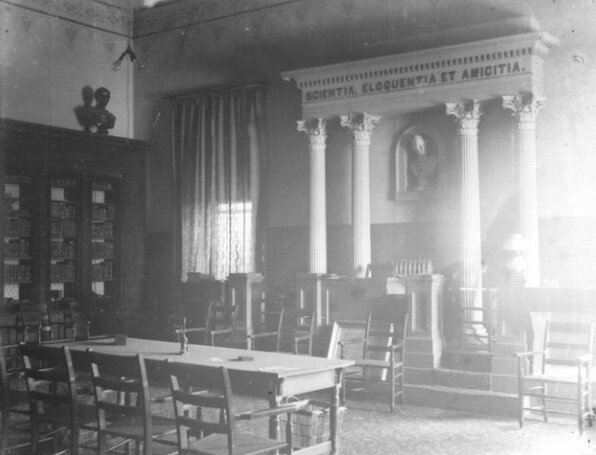
Stay on the third floor for this second-part of this stop on the audio tour, exploring more on the impact of the two prominent literary societies on campus.
John Reily Knox and His Associates
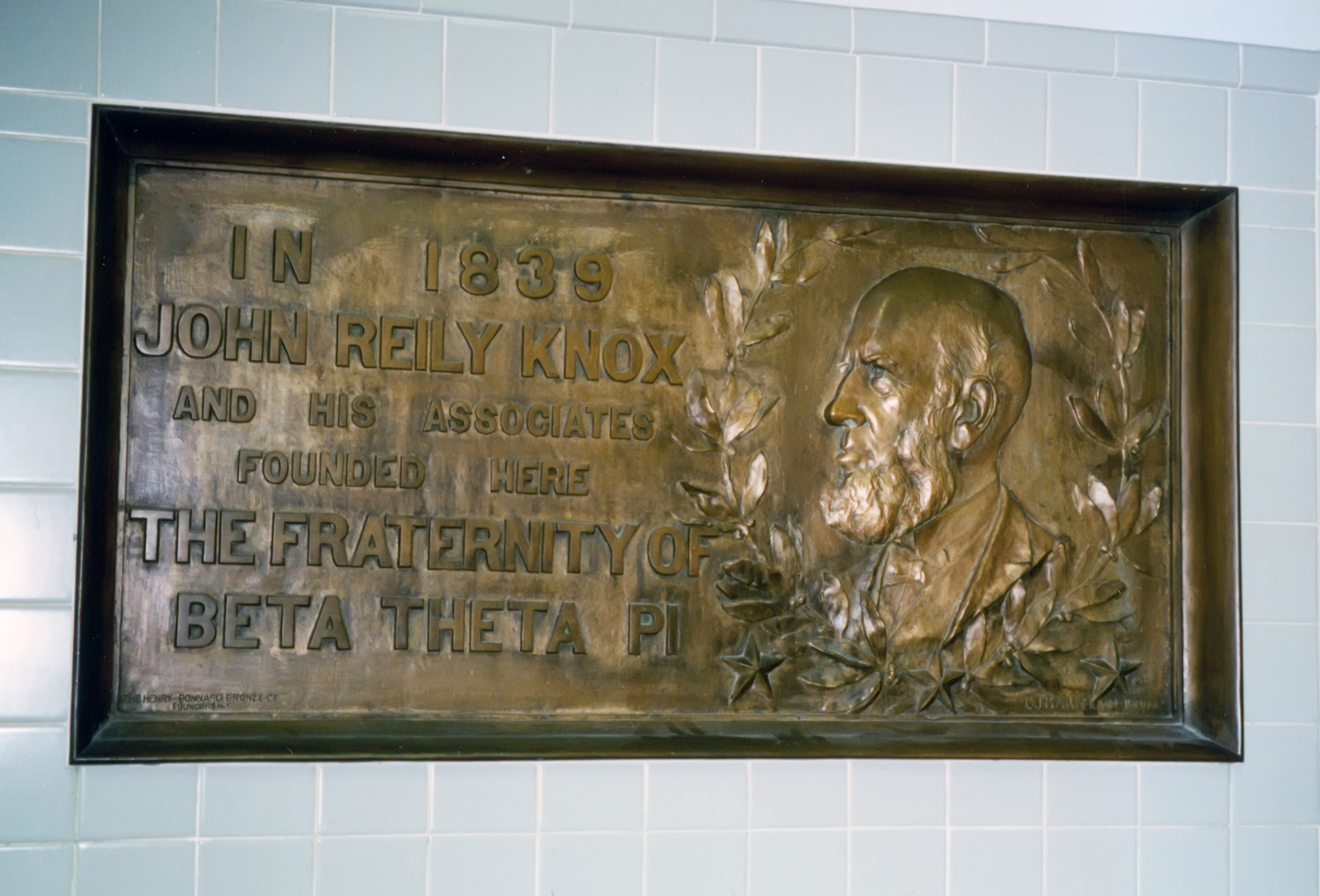
Affixed on the wall near the rear entryway of Harrison Hall is a bronze tablet older than the Beta Campanile. Upon the death of John Reily Knox, this tablet was presented to celebrate the founding of the Fraternity.
Early Days of Old Miami
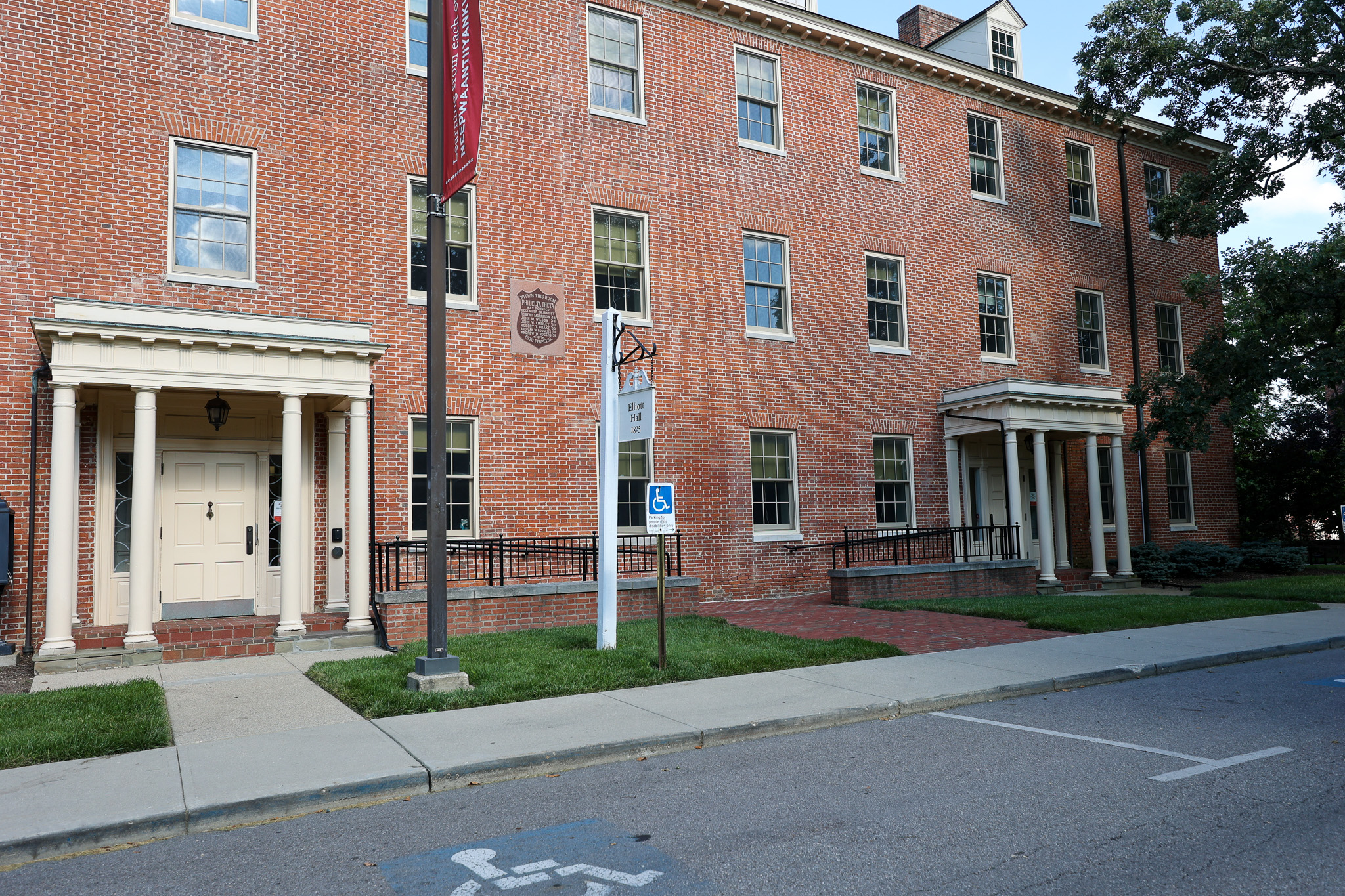
Between Harrison Hall and the Campanile are two of the original dorms on campus. As this section of the tour comes to a close, learn what college life was like in the 1800s.
Beta Campanile
The Campanile
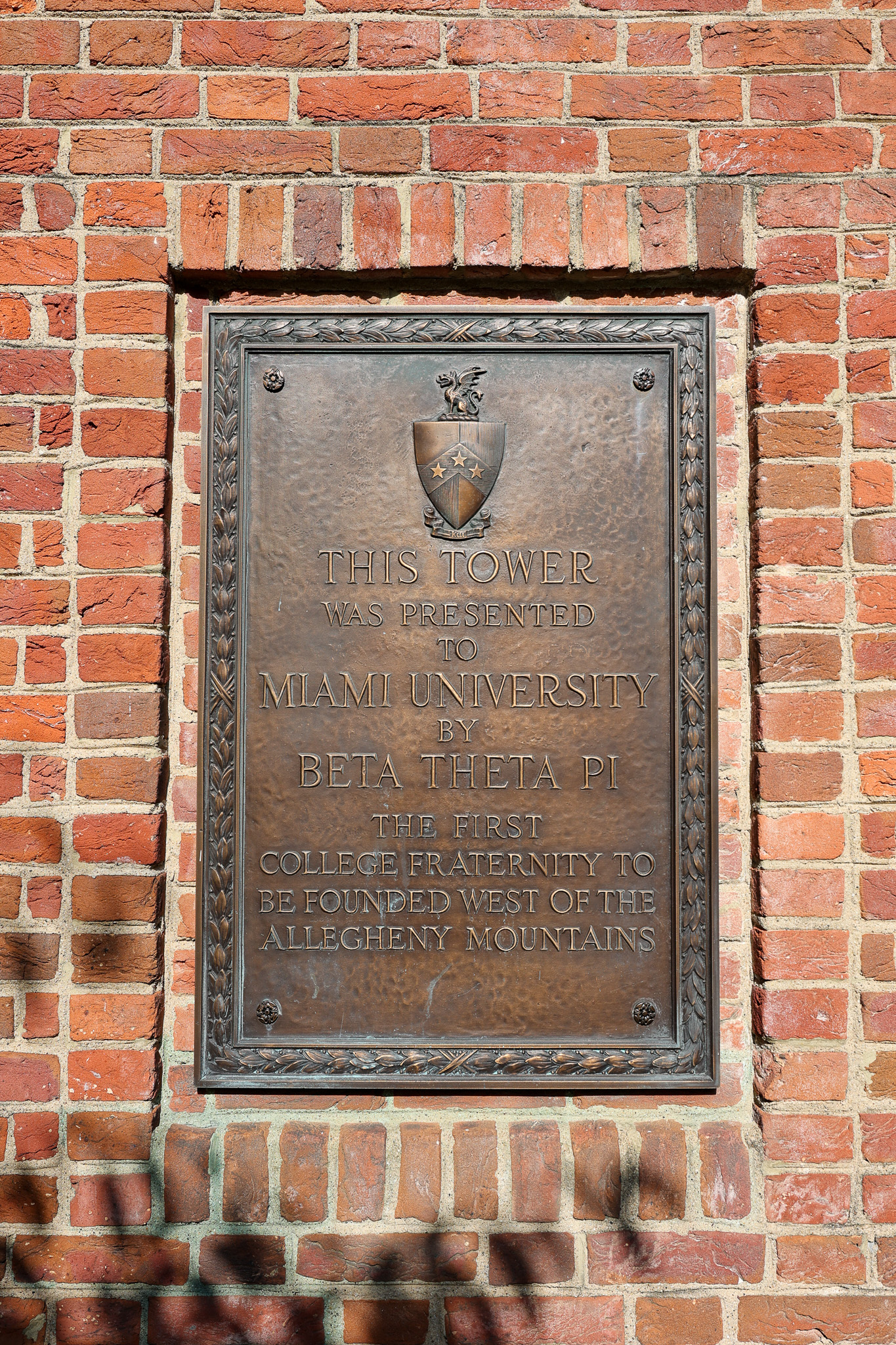
Chief Foundation Officer Phil Fernandez, Miami ’06, guides you through the storied history of the Beta Campanile (pronounced “kam-puh-nee-lee). Start here at the memorial plaque facing Bell Tower Commons and work your way around the Campanile clockwise to explore milestones backward run.
The Sesquicentenary
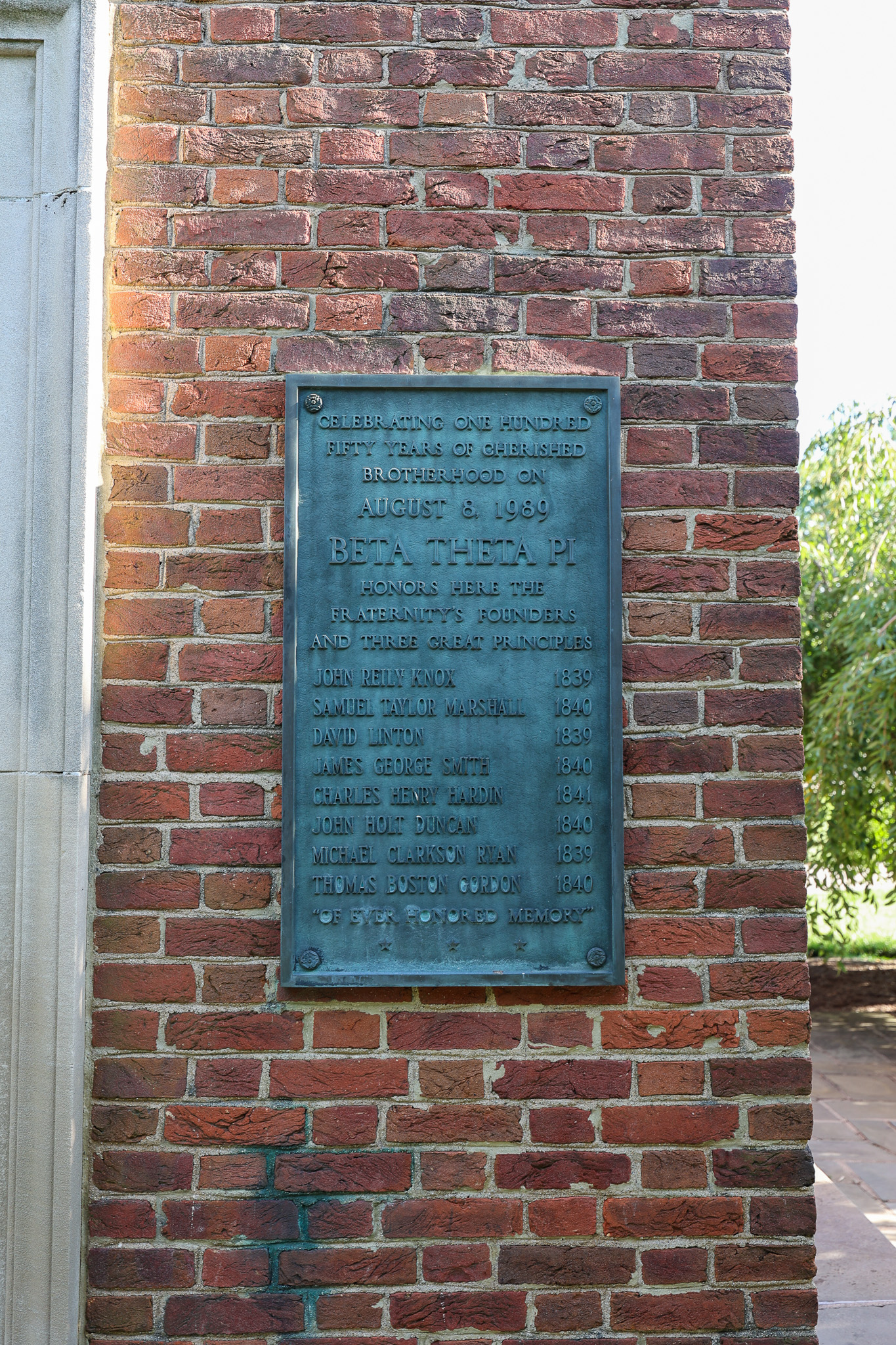
Beta celebrated its 150th anniversary in 1979 with the presentation of a fourth plaque on the Campanile, honoring the founders.
Beta's 175th Anniversary
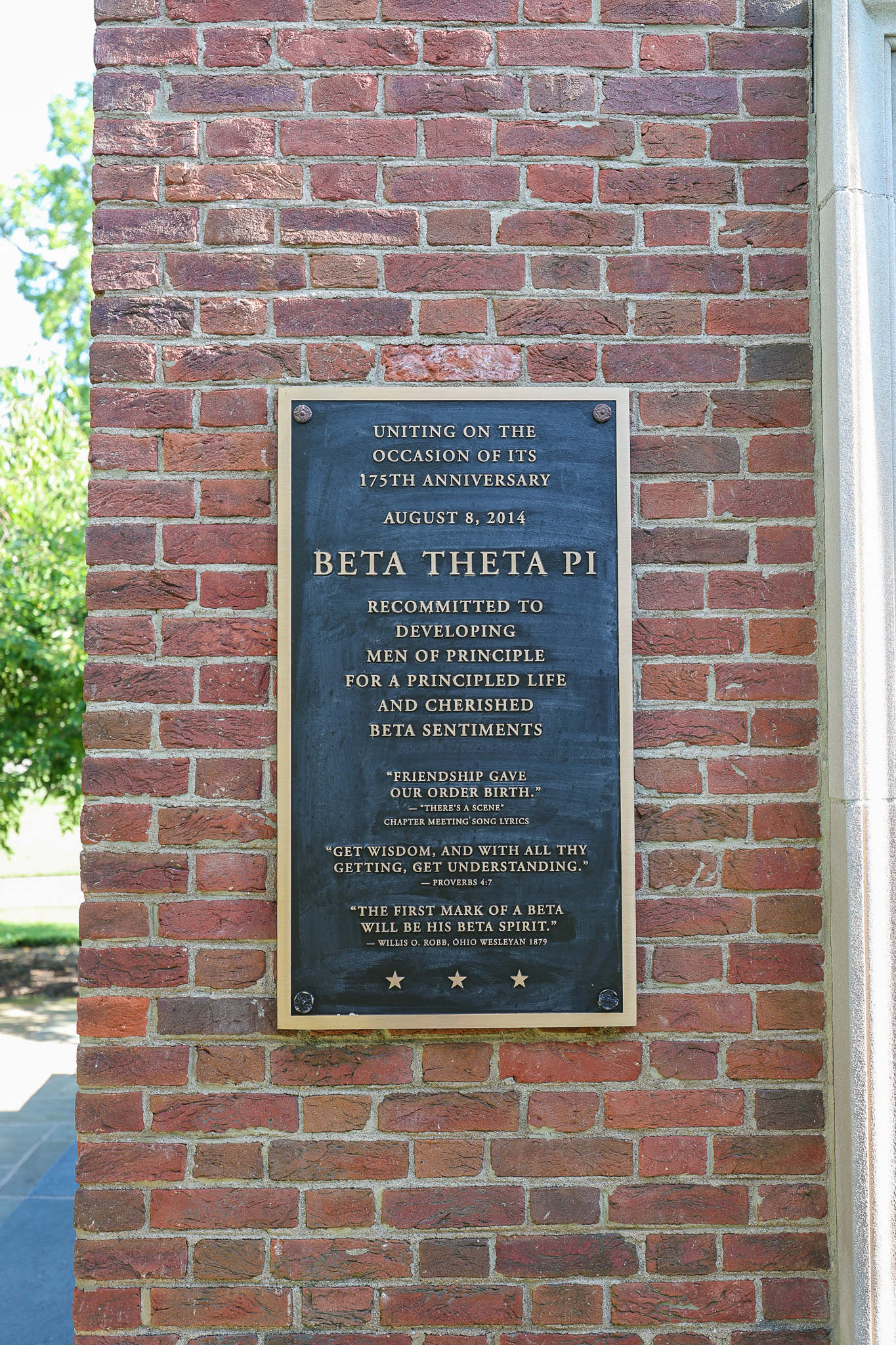
The most recent milestone was the dodransbicentennial celebration in 2014, hosting more than 1,500 brothers, Sweethearts and Friends of Beta in Oxford.
The Beta Bells and Centenary Day
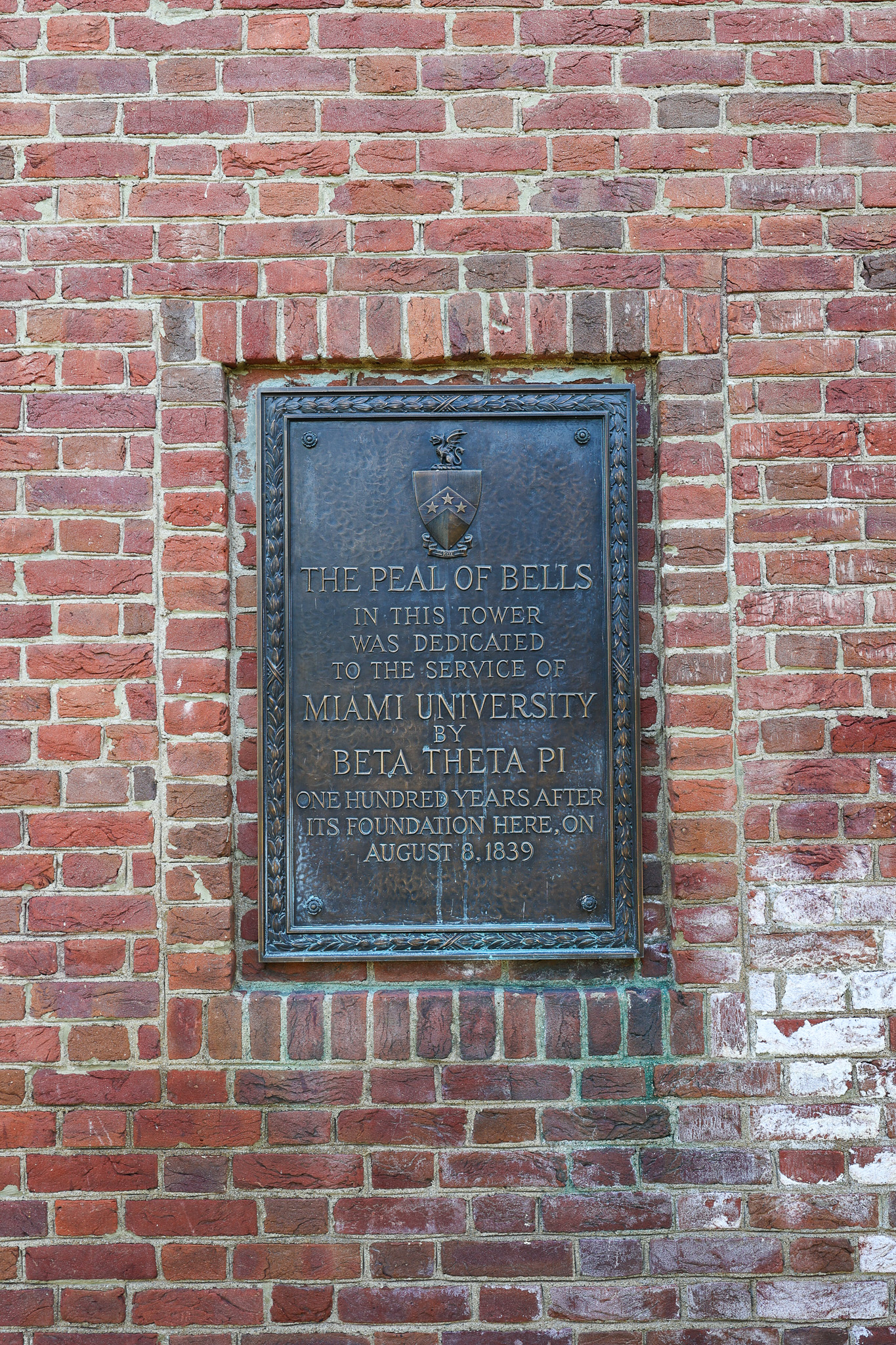
This plaque dedicates the Peal of Bells to service. It was a gift from Beta to Miami University on Centenary Day with the hope that the four bells — “Beta,” “Theta,” “Pi” and “1839-1939” — would continue to ring across campus for centuries to come.
Beta's Quasquicentennial
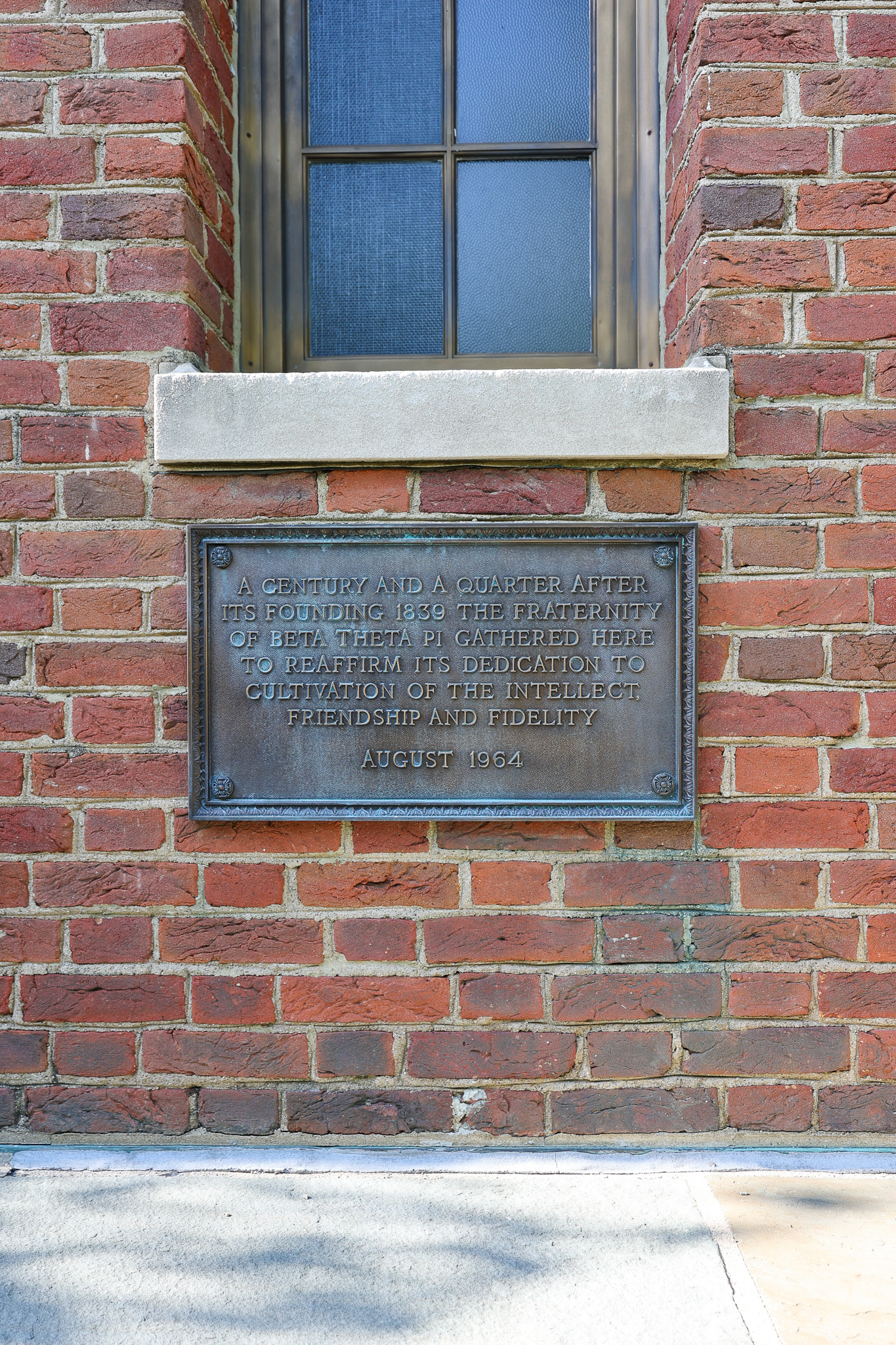
The quasquicentennial was Beta’s 125th anniversary. It was here that the great orator Dr. Seth R. Brooks, St. Lawrence 1922, gave his solemn address reaffirming Beta’s values and principles.
140 Years of Beta Theta Pi

There is no plaque to commemorate this oration at the foot of the Campanile, but travel from here with the wisdom bestowed by Beta Great Dr. Seth R. Brooks, St. Lawrence 1922.


